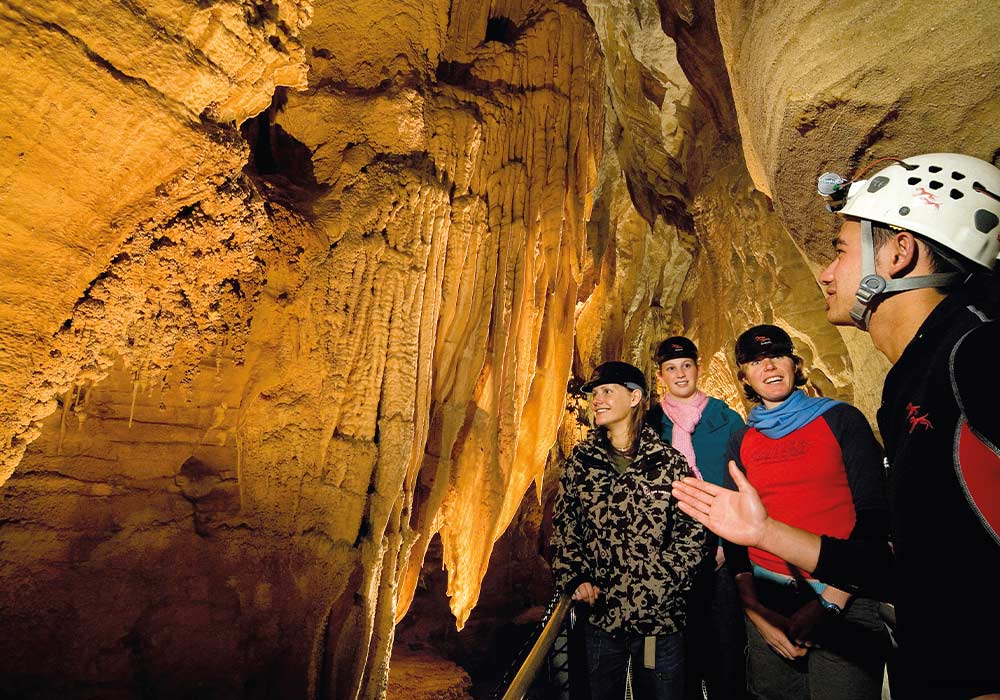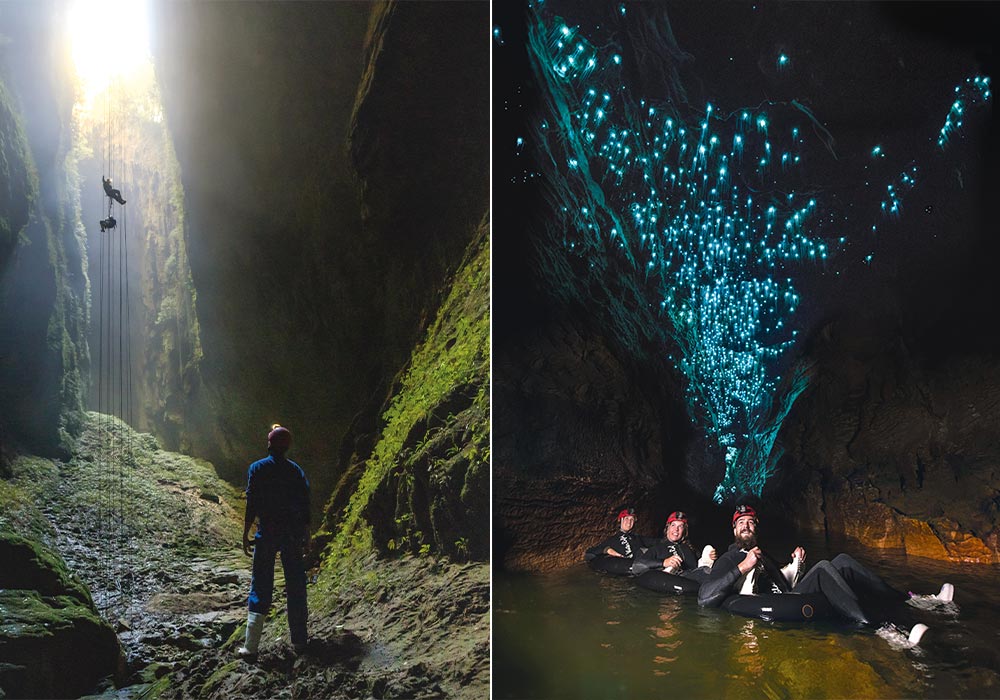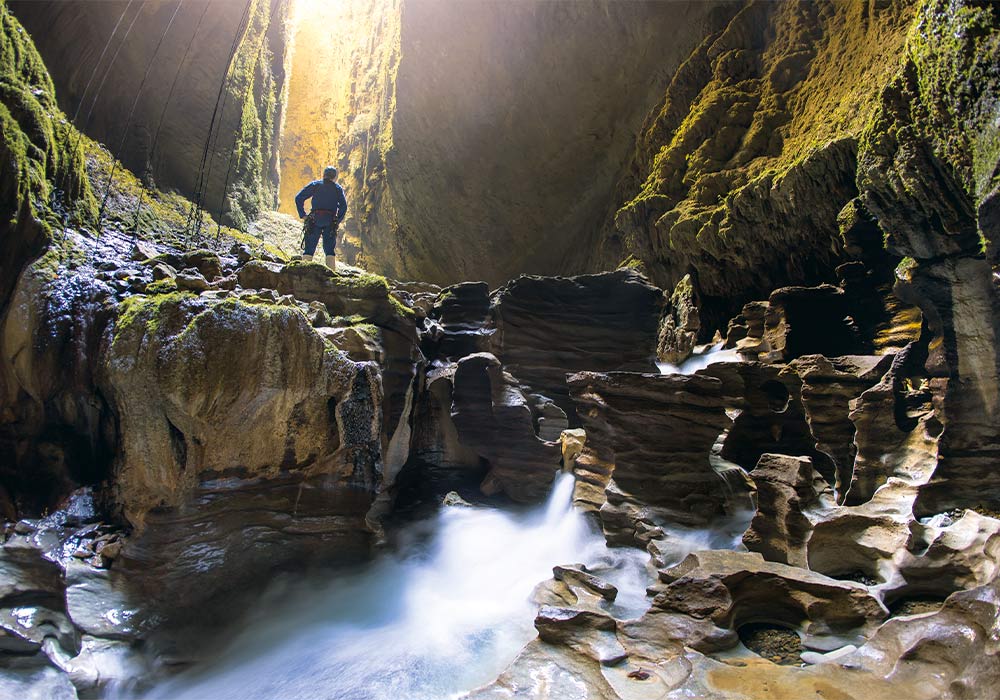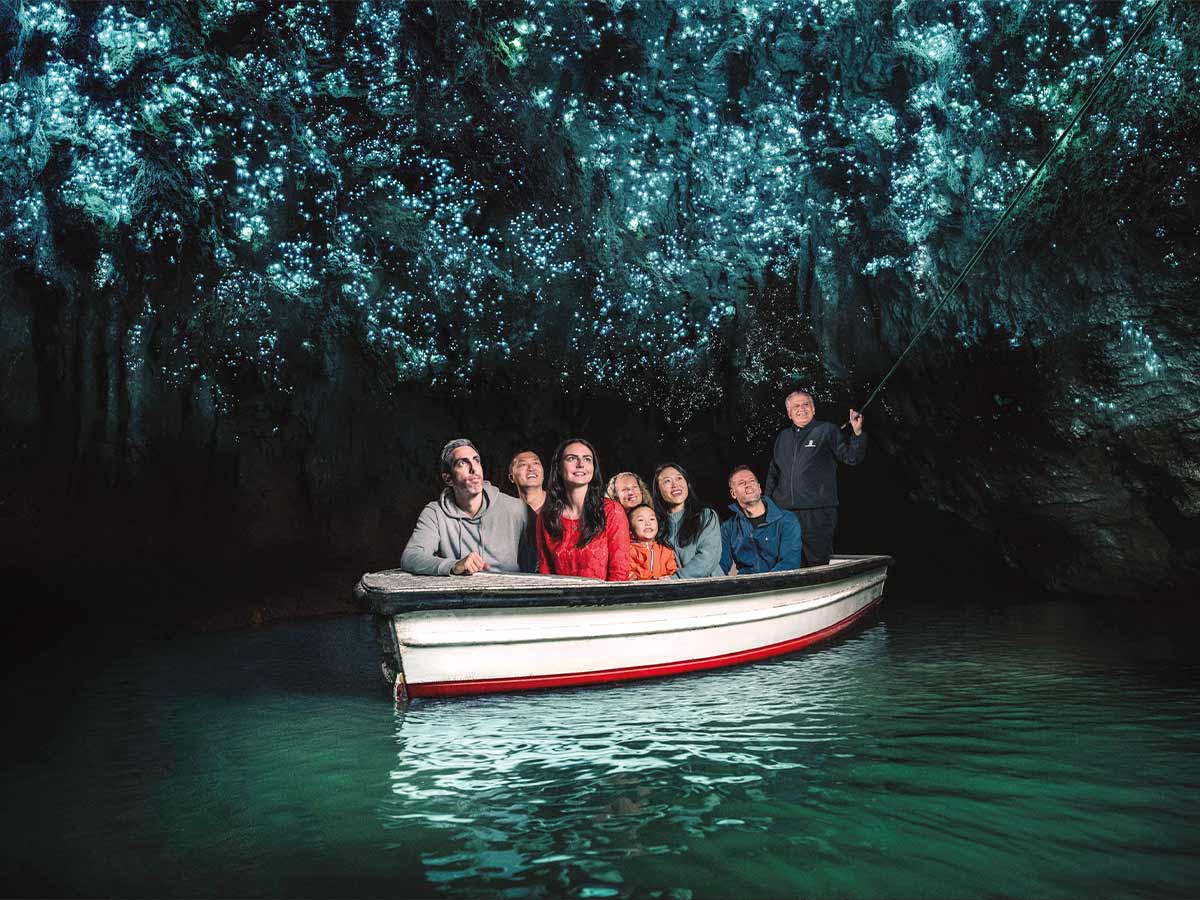Being a tourist in your own country feels somewhat amiss, but there are many reasons not to delegate Waitomo as solely a tourist destination. Mel de Jongh takes a family trip to the world-famous Waitomo Caves and beyond.
Whether it’s adventure, education, or a spiritual experience you seek, it turns out that Waitomo will provide. Our family of four chose to embrace one of New Zealand’s most magical natural wonders and discover for ourselves the Waitomo Glowworm cave experience.
What better place to absorb New Zealand history than in a dark cave? The 45-minute fully guided tour is hosted by guides knowledgeable in both the cultural history and scientific development of the caves. Thus, entering the dim, damp cave treats visitors to a combined spiritual and educational experience.
A historic adventure

The tour commences with a glimpse into the dawn of this impressive tourist venture. The Waitomo Glowworm Caves were explored in a joint expedition between the local Māori Chief, Tāne Tinorau and British surveyor, Fred Mace in 1887. On a raft they built of flax stems, and armed with lit candles, they ventured into the unknown together. Tinorau later found a land-based entry to the caves, which is used today as the main entry point.
The caves opened to visitors in 1889, which kickstarted a major tourist operation that has gone on to significantly impact the region. The Ministry of Business & Innovation estimates that visitors spend around $87 million in the region annually as a result of the caves. Although initially operated by the government, the cave and lands were returned to the descendants of Tāne and his wife Huti in 1989. Today, many of the staff working on-site are their direct descendants, reminding us of its special historical connection.
Geological wonders

Those who have donned helmets and experienced a raw caving experience will need to adjust their expectations on this tour. The cave stairs are lit, there are handrails throughout, and the constant reminders not to slip are a nod to the fact that this is not a high-adrenaline activity.
I would recommend, therefore, harnessing its spiritual and educational characteristics. To further dampen any prospect of danger, the limestone layers act as a natural shock absorption and prevent the cave from moving around in an earthquake.
Perhaps that’s for the best, as the tour meanders to a depth of 16 metres into the heart of the cave. As you wander, you’ll see encrusted in the ancient rock walls a plethora of seashells, oyster shells, mussel shells, and white coral. This confirms that the cave was once under the ocean (apparently around 30 million years ago). If, like me, you still confuse the stalagmite and stalactite, there are many examples in the cave for your tour guide to enlighten you. Don’t bother attempting to watch their growth, though, as it takes roughly 100 years for them to grow one cubic centimetre.
When our group reached the Cathedral level, our lovely guide, Charlie, opened up the floor to budding singers to test the acoustics. When she was met with silence and the nervous shuffling of feet, she herself performed a beautiful Māori song with a strong, sweet voice that echoed around the chamber. Don’t be disappointed if you don’t get such a performance from your guide, though. Charlie admitted that her cousin, who was leading the tour ahead of us, was not a singer. Instead, we had heard him lead his group in a repertoire of clapping. We counted ourselves very lucky to be treated to her performance.

Your guide will point out the Tomo, pronounced taw-maw meaning ‘watering hole’ in Te Reo Māori. It’s essentially a giant hole that was carved out by an ancient waterfall. This waterfall was believed to have been created from a volcanic eruption long ago that created cracks in the surface that allowed water to leak into the cave. At the bottom of the cave, a river awaits for the final portion of the tour.
The star of the show, the Arachnocampa Luminosa or glowworm, is first introduced on a low-hanging rock formation. Your guide will hit the lights to illuminate the worms and describe their life cycle, as you take in the stealthy killer’s beauty. Attracting bugs with its hanging luminescence, the glowworms’ life cycle is one worth hearing.
The real moment to enjoy the beauty of the glowworm happens in the last part of the tour. Everyone hops aboard a large dinghy bobbing in the unseen river. The tour guide, standing at the front of the vessel, guides you through the darkness, pulling on ropes suspended from the roof of the cave. You spend several minutes in complete darkness and peaceful silence, craning your neck upward to absorb the illuminated ceiling. This is a powerful spiritual moment. Nature, beauty, and quiet combine to create restorative inner peace.
As we emerged from the cave and disembarked into the light of the forest, it felt as though 45 minutes had passed by very quickly. Of note, our kids (aged 6 and 10) were transfixed for the whole tour, enraptured by the surroundings and stories. This was a good length of time for young children to remain engaged.
Once back in the light, you’re quickly transported back to reality via way of the gift shop. I had to remind myself to maintain that peaceful aura I had adopted while we floated under the shimmering ceiling – at least for the remainder of the day.






